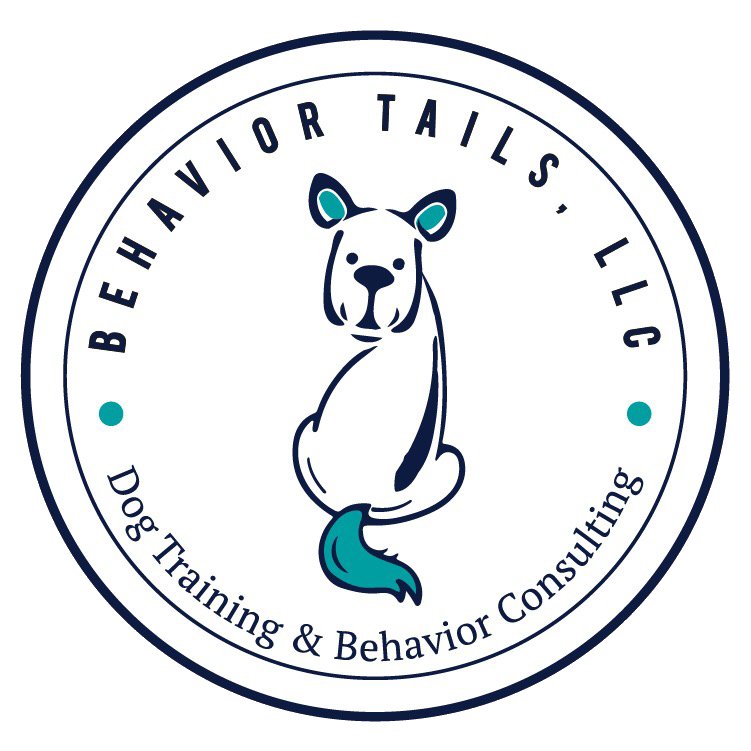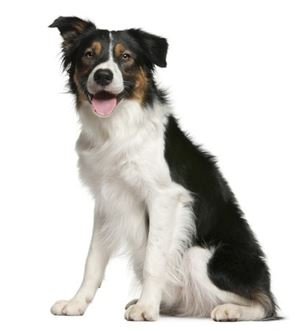This month’s breed highlight….
The McNab Dog
Photo Continental Kennel Club}
The McNab Dog, also known as the McNab Shepherd or McNab Collie, is a working herding breed dog, bred to herd sheep in the rough conditions of late 19th century California, and is one of the few breeds that originated in the US.
According to the Continental Kennel Club (CKC), when shepherd Alexander McNab moved from Scotland to Mendocino County, California, in 1866, “he became dissatisfied with the dogs available to work sheep in the way that he needed”. He had used a Scotch Collie named “Flora” for years, and when she passed, he could find no local dogs who matched her skill for herding. So, when he returned from Scotland in 1885, he brought two Scotch Collies back with him. These two dogs, half brothers Peter and Fred, were already experts at heading and herding (turning and moving the sheep from the front or back of the herd), and were set to work right away tending to the McNabs’ 3000 head of sheep. In order to keep their line going, and to create dogs that were more resilient in the scorching conditions of the California sun, Peter and Fred were bred to local dogs who McNab had seen herding for Basque immigrants in the area, and who were handling the temperatures well, and had the stamina he was looking for. These immigrants had brought the dogs with them from the Basque Country, but did not know their provenance outside of that. Alexander McNab was thrilled with the results, and named these offspring “McNab Shepherds”. The McNab family continued to perfect the breed, selectively breeding for short, dense coats to help the dogs deal with the heat, and to make them more resistant to foxtails. He also selected them for their small, nimble, yet tough feet {The McNab Shepherd Registry}.
These days, where the McNab dog is known, they have a reputation for their agility, balance, graceful athleticism, dexterity, and endurance. They are long, rectangular in shape, with their body’s length being more significant than their height. Females range from 18-23 inches tall, weighing about 40-60 lbs, and males are 19-25 inches tall, weighing anywhere from 50-70 lbs. Clearly there is a wide range of sizes within the breed, with weight varying in proportion to height. They are athletic in appearance, but very light on their feet, medium boned and sturdy {Continental Kennel Club}.
The McNab dog has a short, protective undercoat and a short, smooth, weather-resistant topcoat of medium length, with a coarse, dense, and glossy texture. The hair is often slightly longer on the tail and around the neck, forming a light ruff. Sometimes they may also show furnishing on the tail, back of the hind limbs, and the ears. The McNab's coat can be solid, bi-color or tri-color, and the white markings may be clear or have some ticking.{Wisdom Panel}
Their heads are in proportion with their bodies, with no extra skin and the fur on their face is consistent with that on their bodies. Their eyes are generally hazel, amber, to dark brown in color, and should not be blue because they need to be able to deal with bright, sunny conditions with good visual acuity. Their ears are usually pricked or semi-pricked and medium in size, and the two ears can vary from one another, according to the CKC’s breed standard. The most important aspect of their ears is the ability to hear the shepherd, therefore “the requirements for the McNab’s ears are rather lenient.” Their tails are either straight, slightly curved, or have what is known as a “shepherd’s crook” at its tip {Continental Kennel Club}.
McNabs can look quite similar to Border Collies, with a shorter, more dense coat. However, McNabs are easily recognizable by their cat-like feet, which some think contribute to their athletic agility. These were selectively bred to help the dog be nimble on its feet, but with tough pads made to withstand the heat of the California sun and foxtails {Embark}.
Temperament
Photo from Wisdom Panel
Like many working dogs, the McNab dog is eager, energetic, and exceptionally intelligent. While these are qualities that are in demand for a working dog, lack of work and training can result in boredom for this breed, and potential behavior issues, such as neurotic and destructive behaviors. For this reason, McNab dogs need more regular training and mental and physical stimulation than most dogs. However, with plenty of interaction, socialization and training, they can make great family pets who bond strongly with family members, including other household pets {Continental Kennel Club}. It should be noted, that they tend to be most loyal to the individuals who interact with them most, and can be reserved and very disinterested in unfamiliar people. They have a keen sense of their “home territory”, and therefore rarely stray from home, but unlike many other herding breeds, they are fiercely protective of their household {The McNab Shepherd Registry}.
Thinking of adding a McNab dog to your family?
On the plus side, McNabs are easy to groom. The CKC recommends brushing them at least once per week to keep their coats shiny and debris free. They shed extensively (“blow their coats”) in Spring and Autumn, requiring more frequent brushing. Frequent bathing is not necessary to maintain their coats.
With nourishing food and plenty of exercise to maintain their good health, their average life span is 13–15 years, making them a long lived companion. However, it should be noted that McNab dogs may carry the MDR1 mutant gene and can be very sensitive to the active ingredients in many heartworm prevention medications, which could be deadly to them. This mutation can be detected through a medical DNA test done through the Washington State University College of Veterinary Medicine by sending a cheek swab through the mail {The McNab Shepherd Registry}
Before getting a McNab dog, a potential family should know that training is an absolute must for them. They are quick, clever dogs who are eager to please and learn, so they thrive in training, which can help channel this intelligence and energy. In order to facilitate a bond with these assertive yet sensitive dogs, dynamic training through positive reinforcement is a necessity, as they can be wary and obstinate with other training styles, and bore quickly with repetition. Because they often bond with the person who interacts with them most, having training with the whole family, including family pets, is important to help them become family dogs. Also, exposure to new environments, sights and sounds will be necessary to help them acclimate to life as a modern dog in a people centered world. While requiring much time and energy, McNab dogs are sensitive to their family members, and are known to have a “playful nature with a fun loving steak” {The McNab Shepherd Registry}.
Most importantly however, McNab dogs have exercise requirements that most families will have difficulty meeting. Renowned for their incredible endurance, McNabs have been known to cover over a hundred miles a day driving their herds, using both their physical stamina and intelligence regularly. Because of this, they can become restless if isolated or neglected. {Embark}
A working dog through and through
[Photo from Wisdom Panel}
The modern McNab dog is known to work more independently than many herding breeds. While they were intentionally bred to herd sheep, they are bold and intelligent enough to also herd cattle with ease, as well as geese, goats, llamas and horses. Their assertive intelligence, courage, and athletic resilience also make them very popular in the world of dog sports. McNabs can now be seen competing with great athletic prowess in agility trials, dock diving, disc dog competitions, herding, lure coursing, dog sledding, skijoring and flyball, as well as being strong competitors in barn hunt and nose work.
Because of the McNab’s reputation as a resilient "all-weather" dog, they are becoming highly sought after for Search and Rescue work. Other, similar jobs include working as evidence search dogs, cadaver dogs, archaeology dogs, and area search dogs for missing persons, where they are tireless team members.
In addition to physical work, McNab dogs are also becoming more common as service dogs, as their watchfulness and sensitivity to their people helps them be hyper aware of potential medical issues and needs {The McNab Shepherd Registry}.
Breed Status
{Photo from Embark}
The McNab dog is currently not recognized as a standardized breed by any major kennel club, including the American Kennel Club (AKC), but are recognized by the less well known Continental Kennel Club (CKC). In 2014, the McNab Shepherd Registry (MSR) was established, with the goal to “continue the betterment, advancement and welfare of the McNab Shepherd.” MSR is also working with veterinarians to establish a unique genetic signature for the McNab dog. Samples collected from McNabs across the United States are analyzed for their genetic signature in order to create a unique breed signature for the dogs, as well as evaluate certain physical traits and disease-causing mutations to help establish a baseline for these in the McNab population {The McNab Shepherd Registry}.
The MSR is what is known as a "founding registry" because they exclusively utilize discovered genetic markers and DNA verification for registration. Anyone interested in having a McNab dog should have a look at the details about the dog on this website, and consider buying and definitely registering their dog through the MSR in order to keep the breed intact and healthy.
While McNab dogs (McNabs, McNab shepherds) are becoming more common both within and outside of California, their home state is where they are most likely to be seen, and is the best place to get one. They are still a rare line of dog, and will take some research to find a puppy {Embark}. This intelligent and energetic dog can be a great family member, as long as it’s demanding physical and mental needs are met. Anyone wanting to get a McNab dog should consider this as a must.





